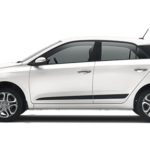By 2028, the worldwide eCommerce automobile aftermarket is estimated to be worth $143.9 billion, representing a 14.6 percent compound annual growth rate (CAGR) over the following six years. When you include new companies challenging the market, the automobile industry is on the verge of a paradigm change.
The car industry’s rate of change has increased in the last year, as it has in many other sectors. People were obliged to perform practically everything online due to COVID-19’s forced imprisonment. This helped early adopters in theautomotive eCommerce industryand considerably strengthened the already-existing online automotive aftermarket purchasing trend.

Traditional aftermarket merchants are constantly being challenged by eCommerce businesses that more efficiently access the market. But it’s not only aftermarket firms who are taking advantage of this trend. In this post, you will find some e-commerce benefits for the automotive sector across the whole value chain.
Become Location-Independent by Expanding Your Clientele
E-commerce eliminates geographical boundaries, allowing sales to occur in locations that are difficult to reach through traditional methods. Your market share is very much related to your site in a conventional automobile sales model, where individuals come to a dealership to test drive cars and choose out their favorite. With an eCommerce approach, distance is no longer a barrier; clients may order from you from anywhere in the country. Offering components and automotive items in numerous languages, different currencies, and location-specific transaction choices make it simple to grow into new markets and sectors.
Also Read:
- Top 6 Best Portable Tire Inflator For Car in 2022
- Top 5 best Fire Extinguisher for Car of 2022
- 18 Best Car Gadgets and Accessories for Road Trips
Appreciate And Use New Ownership Frameworks
不仅是客户的购买习惯改变,but so are their vehicle usage and ownership habits. Customers are growing more receptive to the concept of not owning their car, which might mean switching to a leased vehicle or making use of alternative services such as ride-sharing. The sharing economy is on its way, and with it will come a surge in demand for more sustainable and efficient automobile access.
Future-Proof Your Brand by Digitizing Processes
With revolutionary platform firms likeJayco RV’semerging and established corporations growing their interests in the automotive aftermarket sales area, investing in a robust eCommerce strategy is one way to prepare for what’s to come. The epidemic has also demonstrated that in times of uncertainty, the brands and merchants that are agile and able to shift and adapt to new situations and obstacles swiftly are the ones who prosper.
Re-Imagine and Improve the Customer Experience
People have learned to demand the same ease from eCommerce frontrunners everywhere; therefore, the broad e-commerce trend impacts many facets of consumer behavior. Consumers are increasingly turning to digital platforms for research and exploration because they provide more control over the buying process. Huge expenditures, such as buying a car, frequently need lengthy research or aftermarket improvements, which customers are increasingly conducting on their own.
There are several strategies to improve the quality of service. Personalized sub-sites or standalone stores, for example, all stem from a single branded eCommerce platform. This enables you to develop customized encounters and advertising funnels, target specific sectors, and separate distributor and reseller destinations.
The actual dealer experience, on the other hand, is still significant and required. Physical dealers will take a long time to be entirely supplanted by e-commerce if it ever happens at all. Before making a final decision, a large number of automobile buyers will almost certainly want to see, touch, and test-drive vehicles. The physical and digital brands should be integrated to achieve the most significant outcomes. Digital can be leveraged to give substantial buy triggers and improve the customer experience when they come into a dealership.
The automotive e-commerce industry will continue to develop, driven by a rise in overall vehicle sales and the emergence of new automotive businesses. In this context, the question for automobile retailers such as Jayco RV’sis whether or not it makes sense to go digital and embrace an eCommerce model, but when. And, as usual, getting started is the key to moving ahead.








